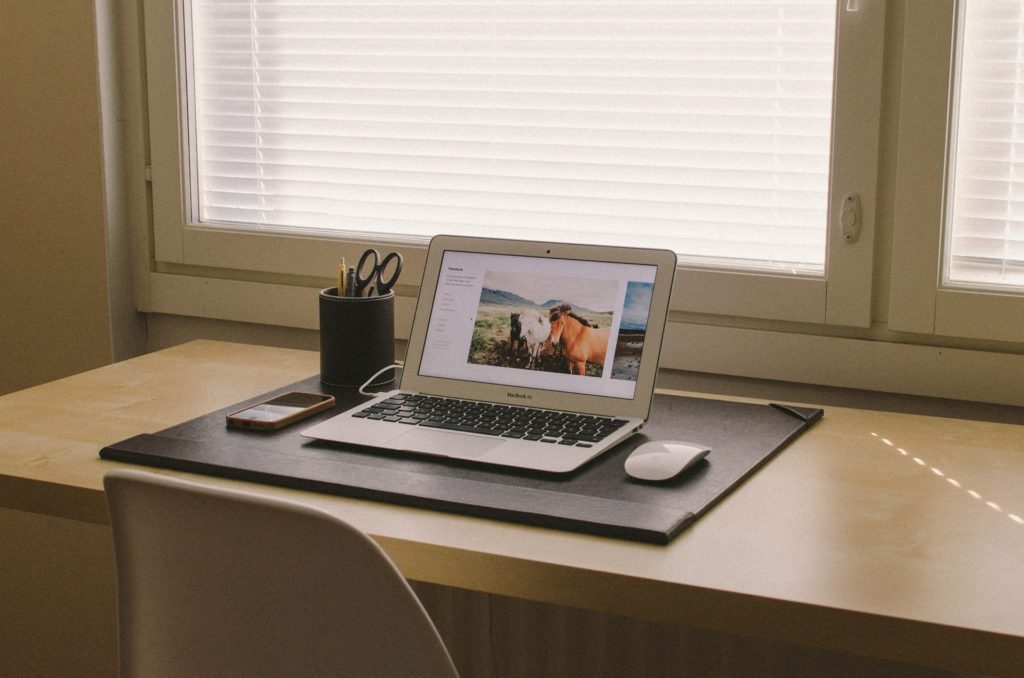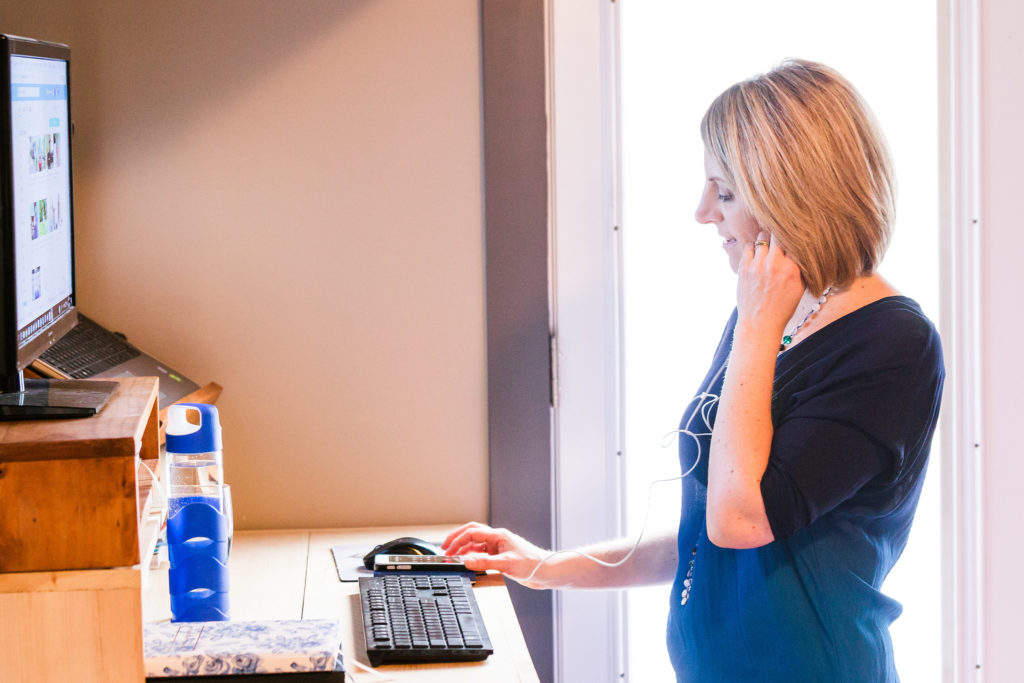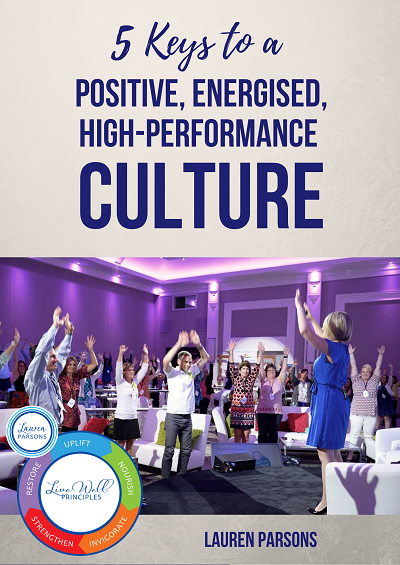Picture yourself, returning home after a productive day at work, having completed all of your most pressing tasks, having great energy throughout the day and feeling connected and engaged as part of your wider team. Imagine getting home early in fact, being on time to see your kids play sport, cook with your spouse or just to relax in your favourite chair, feeling satisfied about the day.
Sadly, this isn’t the reality for many workers who instead feel constantly busy, yet go home feeling they haven’t achieved everything they wanted to. Finish times creep later and later in an attempt to get ahead, but somehow it never seems to make a difference. Meanwhile, families suffer and life-work balance is a constant struggle.
Research shows that the average employee performs only 2.8 hours of productive work each day[i].
Yes, only 2.8 hours!
Imagine if you could create a workplace culture that supports staff to increase that number so they can be super-efficient and effective and able to head home and switch off, feeling satisfied with the value they’ve delivered in the day.
If you want to improve your own productivity as well as that of your team – and at the same time improve work/life balance – you need to create a workplace culture that empowers people to work in sync with their ultradian rhythms.
Time-management specialist Robyn Pearce, known as ‘The Time Queen’ says that time-management is actually energy-management.
When you want to be more productive, it’s really a case of enhancing the way you use your energy and effort throughout the day. By structuring the day in blocks of time, syncrohnising breaks and ‘golden hours’ as an organisation and empowering staff to work with their body’s natural rhythm you can create huge efficiencies and ensure staff thrive.

Ultradian Rhythms
Ultradian rhythms are your body’s natural energy cycles which rise and fall regularly throughout the day. ‘Ultra’ meaning many and ‘dian’ meaning day, these cycles overlap your circadian rhythm with regular 90 minute upswings followed by a 20 minute downswings.
During the upswing you can engage in focused, mental activities, after which time your body and brain need a short recovery break to recharge. Similar to the way your sleep cycle consists of several 90-minute periods that take you through the five stages of sleep, ultradian rhythms take you through peak moments of productivity and necessary moments of rest.
The 20-minute downswing is, surprisingly, the most important aspect of your ultradian rhythm. This is the time when your body needs to take an ultradian break to recharge ready for the next upswing. The challenge however is that when we have an important task to complete, it is tempting to just keep going and ‘word harder.’ But this is actually counter-productive.
When you notice the signs that your body and brain need a break – for example, you feel sluggish, unfocused, easily distracted, tired, hungry, thirsty or uncreative – you can choose to ignore the signals and push through. Your body will then respond by treating this as an emergency situation, because from its point of view, if you’re not listening to the clear cues it’s sending, perhaps this is a life or death situation.
Your body will then kick into fight or flight mode. You have a release of adrenalin and cortisol and experience a ‘second wind.’ This is okay from time to time, however when it’s repeated continually, you risk chronically elevated cortisol levels and head yourself towards fatigue and burnout.

Making the Most of the Downswing
During the downswing, the ideal ultradian break for your body and brain is to recline with your eyes closed breathing diaphragmatically. Not sleeping, but just resting and allowing your mind to wander. This allows your brain to ‘defrag’, to file away all of the information you’ve just processed and store it away for easy recall.
Try out this 8 minute audio where I guide you through a progressive muscle relaxation which is a great way to relieve physical tension, aches and pains as well as deal with brain-fog restoring clarity and calm so you can perform at your best.
Taking a break like this allows the brain to come up the most creative, innovative solutions. As Manoush Zomorodi shared in her TED talk, brilliance comes from boredom, and that taking time during the day to do nothing and ‘just be’ is vital to peak performance[ii].
Ideally an ultradian break should consist of activities that relieve your stress and relax the mind. In most offices however, reclining in a chair uninterrupted isn’t always possible or practical, so if that’s the case, have some sort of change of state instead. Get outdoors to spend time in sunlight, find a quiet spot where you can just focus on your breathing or even spend some time face to face connecting with colleagues.
If you completely resist the idea of doing ‘nothing’ use the time to engage in less-brain-taxing tasks. If you’ve been sitting typing, stand up and have a stretch, if you’ve been focused writing, switch to filing or tidying your desk, if you’ve been reading reports stand up looking out the window and make some phone calls.

Making the Most of the Upswing
To make the most of your productive time it is important to work in sync with your energy, capitalising on the body’s upswing. Having a single focus is vital. We now know that multi-tasking has been identified as a myth; when we believe we’re multi-tasking, the brain is really just switching rapidly, using up neural resources in the process.
Instead of having a scattered focus, identify your top priorities, eliminate as many distractions as you can and aim to complete each task, one by one, in an achievable timeframe. It’s incredibly powerful to set an intention around timeframes to give you a sense of urgency. “I’m going to finish this report in 30 minutes”, “I’ll create this draft copy in 45 minutes”, “I’m going to send these 4 emails in 12 minutes”.
The Pomodoro technique typically recommends working in 25 minute blocks with five minute breaks in between. Everyone is different so it’s important to personalise this approach. I find the breaks are slightly too long and prefer to take just a three minutes between focused work. These short breaks are an ideal time to add movement into your day.
We know that exercise improves not just health and fitness, but also our mood, motivation, and even the brain’s ability to process information. You can ‘Snack on Exercise’ as I shared about in my 2018 TEDx Talk, by getting up from your desk and doing a lap of the building, taking the stairs or simply doing a deskercise routine or restorative stretch. By doing so, you make yourself smarter – releasing brain chemicals such as serotonin, oxytocin and dopamine. You also switch on the learning centres in your brain and be much more innovative, creative and better at problem solving.
The short breaks are the essential key to help you perform best during your focused work periods. I recommend using a countdown timer, such as the one on your smart phone, and using my 101 minute cycle alternating between 25 minutes of focused work and 3 minute movement breaks, then after three repetitions, taking a brain break for 20 minutes – which falls nicely in-sync with your ultradian downswing.
25 min focused work : 3 min break :
25 min focused work : 3 min break :
25 min focused work : 20 min restorative ultradian break
Having the countdown timer in front of you creates a false sense of urgency and you are much more aware of where your time is actually spent. You can fit four of these 101 minute productivity cycles into a typical workday and achieve so much more than when you leave your day unstructured, as time typically gets frittered on inconsequential things, eating away at your productivity.

Making the Most as a Team
The biggest challenge to great time-management and productivity is often interruptions. It takes 10 times the length of the interruption to get back in flow and be able to continue working on a task at the same level. That 30 second chat answering someone’s question delays you progressing your own work by another 5 minutes. Even a 10 second interruption takes you almost two minutes to recover and refocus. Imagine that repeated continually throughout the day.
We do of course need to communicate and collaborate with colleagues, so how do we achieve this without creating a perpetual cascade of interruptions that keep everyone out of flow?
Working in sync is again the answer, particularly for organisations where staff manager their own schedule, as opposed to being continually bound by customer facing roles. Some organisations introduce the red flag, green flag system – where everyone has a flag (or post-it note) visible and when the red ‘flag’ is up that is a signal that they’re doing priority focused work and aren’t to be interrupted. For this to work of course there need to be rules and respect around not keeping the red flags up all day!
Another concept is to have ‘golden hours’ at set times during the day. These are pre-determined times when no-one interrupts anyone else in the organisation, unless there is a crisis. Then afterwards everyone can go and ask that question or respond to that email. It all comes down to the expectations you set and how they’re communicated and managed. When golden hours are working well, people naturally focus on having those important conversations before or after the hour rather than creating never-ending distractions to others throughout the day.
Golden hours work best when there is work time before or after them where people can freely interact, ask questions and get direction, so they’re best to avoid first thing or last thing in the day. Imagine in a 9-5 office for example, having one hour between 9.30-10.30am and another between 1.30-2.30pm when everyone can focus, in uninterrupted bliss and generate substantial outputs.

Synchronising to Boost Connection
As well as synchronising work periods, this approach also encourages staff to synchronise their breaks and down time, creating greater opportunities to connect and strengthen relationships.
Alex Pentland’s research on team dynamics and communication showed that some of the best predictors of productivity are team member’s energy and engagement. Based on that insight, his team recommended that a large bank’s call centre staff take their breaks at the same time, rather than spreading them evenly throughout the day (to keep the same number of staff on the phones at all time, which was the conventional wisdom up until this point).
When they trialed synchronising breaks in one centre, the results were dramatic, with average handling times shortening by up to 20%. As a result the bank plans to roll out the practise across all call centres and predicts a $15 million productivity increase[iii]. All of that, from one simple change – to synchronise staff’s breaks so they can connect and interact.
Social connection is fundamental to wellbeing and essential to build strong relationships, create high performing teams, and improve staff retention. Included among the five “ways to wellness”, connection is also a key predictor of health and longevity. A lack of social connection in fact, is as predictive of early death as smoking, obesity and high blood pressure[iv].
Not only does social connection in the workplace strengthen individuals’ health and wellbeing, it also improves team dynamics, contributing to a highly engaged and loyal workforce. With the current talent shortage, it is more important than ever to create an environment with a sense of belonging, where people love to work and feel strongly connected. This can dramatically lower staff turnover and the huge costs and knowledge-loss associated with every staff member that leaves.
Margaret Heffernan in her 2015 TED Talk said that “what motivates people are the bonds, loyalty and trust they develop between each other.” She stresses the importance of social capital, the reliance and interdependency that builds trust within a team, which enables high-performing workplaces and makes companies robust.[v]

Starting to Work In-Sync
Picture the effects of introducing these practises for yourself personally and within in your own organisation. Imagine seeing your team members performing at their best, highly focused and productive, resilient and engaged. It all starts with a culture change which must be led from the front, with leaders setting the example and inspiring their teams with the benefits that higher efficiency and improved life-balance will give them personally.
Start out by assessing where you could make changes and be sure not just to focus on policy, but also on the ‘unwritten rules’ that may need adjusting.
- Could you introduce a quiet chill-out space for ultradian breaks?
- Could golden hours be agreed upon?
- Could getting up for a deskercise movement break become the new norm?
Your staff need to be informed with the why as well as equipped with the how, to effectively inspire behaviour change. The result of getting your team to work in-sync will be high-performing individuals and teams, enabling your organisation to succeed and thrive.
Want some help to educate and inspire your team so you can introduce this concept company-wide?
Let’s connect for a chat to find out how I can help your team thrive and perform at their best. Feel free to book in for a chat in my online calendar.

To get started with some practical steps to put in place to boost the health and wellbeing of your team, download a complimentary copy of my eBook 5 Keys to a Positive, Energised, High-Performance Culture.
Simply enter your details here so we can email it out to you.

It will equip you with checklists of tips and ideas you can implement straight away to help your team thrive.
Your thoughts?
Do you already use golden hours or synchronize your staff work flows?
Please leave a comment below…
[i] https://blog.rescuetime.com/work-life-balance-study-2019/
[ii] https://www.ted.com/talks/manoush_zomorodi_how_boredom_can_lead_to_your_most_brilliant_ideas
[iii] https://hbr.org/2012/04/the-new-science-of-building-great-teams
[iv] http://www.shawnachor.com/the-books/the-happiness-advantage/
[v] https://www.ted.com/talks/margaret_heffernan_why_it_s_time_to_forget_the_pecking_order_at_work
Share this Post

2 Comments on “Work in Sync to Lift Staff Wellbeing & Performance”
Hi Lauren,
Thanks for this post – certainly makes for interesting reading. I work from home and have done for over 7 years now. I am now trialling the 25 min on, 3 min off cycle. I am still refining it and occasionally struggle to remember to use the timer but i really think its a goer. Any other tips for improved productivity for those working from home?
Thanks
Richard
Great to hear that you’re trialing that 101 minute cycle and the countdown timer Richard. Yes I do have plenty of tips on productivity – where to start!? A good place might be this TV interview https://laurenparsonswellbeing.com/item/tv-interview-on-boosting-productivity/ Hope that’s useful for you.